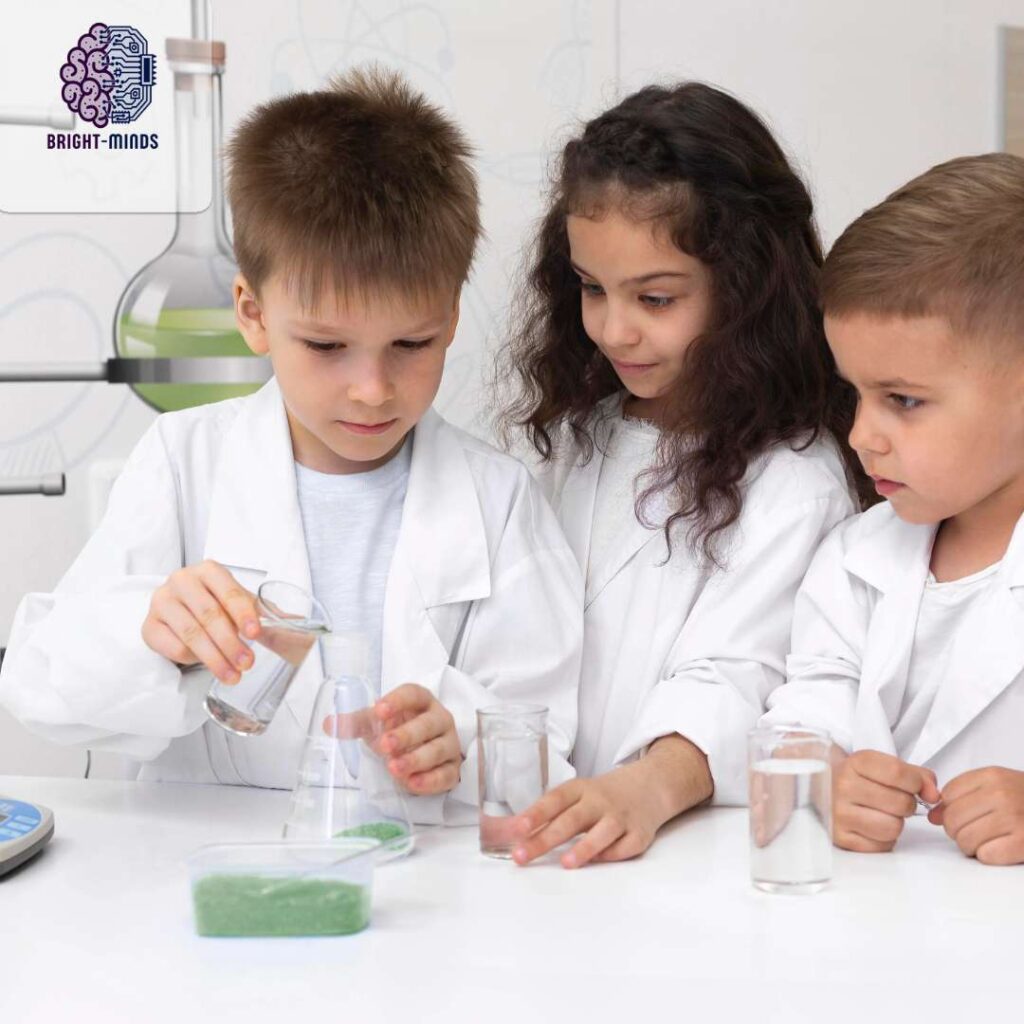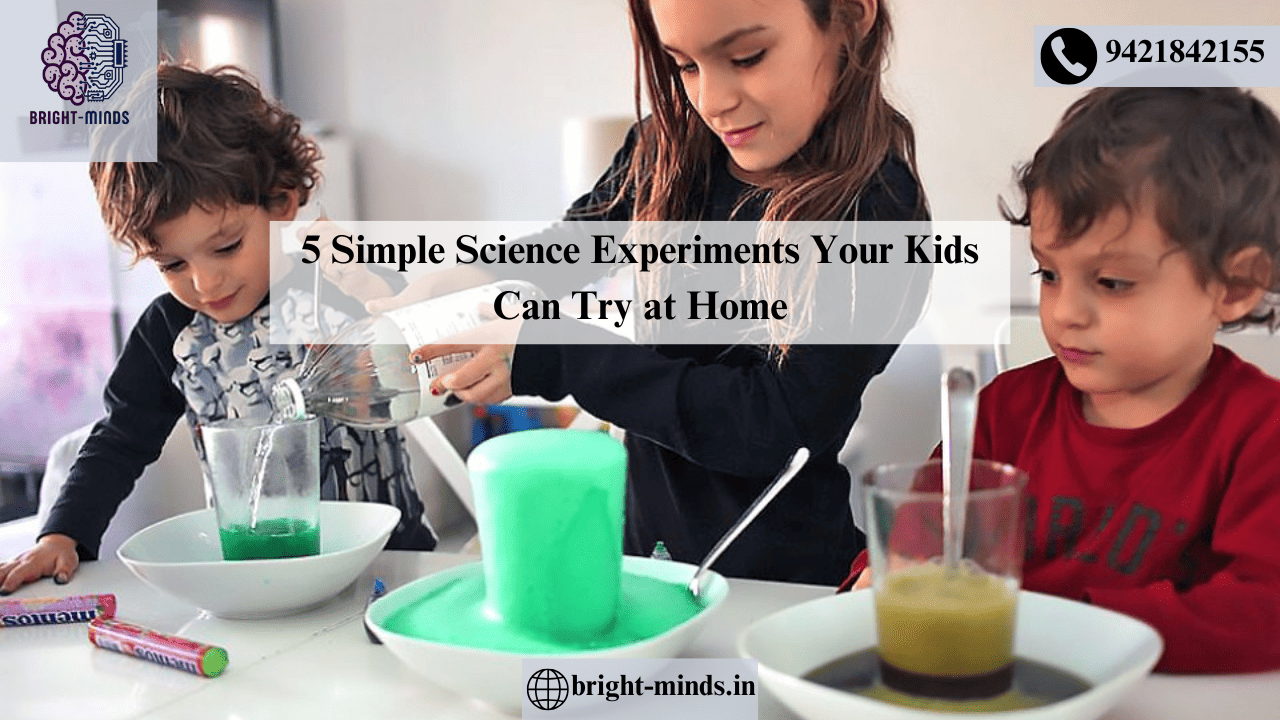Science experiments are a fun and engaging way to spark your child’s curiosity and nurture their love for discovery. Conducting experiments at home doesn’t require fancy equipment or specialized knowledge. With everyday household items, you can teach your kids valuable scientific concepts while having fun together. Here are five simple science experiments your kids can try at home.
1. The Classic Volcano Eruption
What You’ll Need:
- Baking soda
- Vinegar
- Dish soap
- Food coloring (optional)
- A plastic bottle or small container
- A tray or large dish to catch the mess
Steps:
- Place the plastic bottle on the tray.
- Add 2-3 tablespoons of baking soda into the bottle.
- Add a few drops of dish soap and food coloring for dramatic effect.
- Slowly pour vinegar into the bottle and watch the eruption!

2. Floating Egg Experiment
Teach kids about density with this simple experiment involving an egg and saltwater.
What You’ll Need:
- 2 glasses of water
- 2 raw eggs
- Salt
- A spoon
Steps:
- Carefully place a raw egg into each glass.
Science Behind It: Adding salt increases the density of the water. When the water’s density is higher than the egg’s, the egg floats.
3. Rainbow in a Glass
Create a colorful rainbow and teach your kids about density and layering liquids.
What You’ll Need:
- Sugar
- Warm water
- Food coloring
- A clear glass
- A spoon
Steps:
- Mix warm water with different amounts of sugar to create solutions with varying densities. For example, use 2 tablespoons of sugar in the first cup, 4 in the second, 6 in the third, and so on.
- Add a few drops of different food coloring to each solution.
- Slowly layer the solutions in a clear glass, starting with the most sugary (densest) solution at the bottom.
- Watch as the colors stack to form a rainbow.
Science Behind It: The denser solutions stay at the bottom while less dense ones float on top, creating a layered effect.
4. Balloon Rocket
This experiment is perfect for teaching kids about propulsion and Newton’s Third Law of Motion.
What You’ll Need:
- A balloon
- A long piece of string
- A straw
- Tape
- Two chairs
Steps:
- Tie the string tightly between two chairs.
- Thread a straw onto the string.
- Inflate a balloon (don’t tie it) and tape it to the straw.
- Let go of the balloon and watch it zoom along the string.
Science Behind It: As air escapes the balloon, it propels the balloon forward due to Newton’s Third Law: For every action, there is an equal and opposite reaction.
5. Magic Milk Experiment
This mesmerizing experiment demonstrates the interaction between milk and soap.
What You’ll Need:
- A shallow dish
- Milk (whole milk works best)
- Food coloring
- Dish soap
- A cotton swab
Steps:
- Pour milk into the dish, covering the bottom.
- Add a few drops of food coloring to the milk.
- Dip a cotton swab in dish soap and touch it to the surface of the milk.
- Watch the colors swirl and dance!
Science Behind It: The soap reduces the surface tension of the milk and reacts with its fat molecules, causing the colors to move.
Tips for a Successful Experiment
- Supervise Your Kids: Ensure safety during experiments, especially when handling chemicals or breakable items.
- Encourage Questions: Use the experiments as an opportunity to discuss scientific concepts and encourage curiosity.
- Adapt for Age: Simplify or add complexity based on your child’s age and understanding.
- Document Results: Let your kids draw or write down what they observe to reinforce learning.
Why Science Experiments Are Beneficial
- Hands-On Learning: Experiments make abstract concepts tangible.
- Critical Thinking: Kids learn to observe, predict, and draw conclusions.
- Boosts Curiosity: Engaging activities encourage a love for discovery.
- Parent-Child Bonding: Performing experiments together creates memorable experiences.
Conclusion
Science experiments at home are an excellent way to make learning fun and interactive. These five simple activities teach valuable concepts while providing endless entertainment. Try them out with your kids and watch their excitement for science grow!
Also Read:
https://bright-minds.in/unlocking-word-meaning-for-class-ukg-english-to-hindi/

